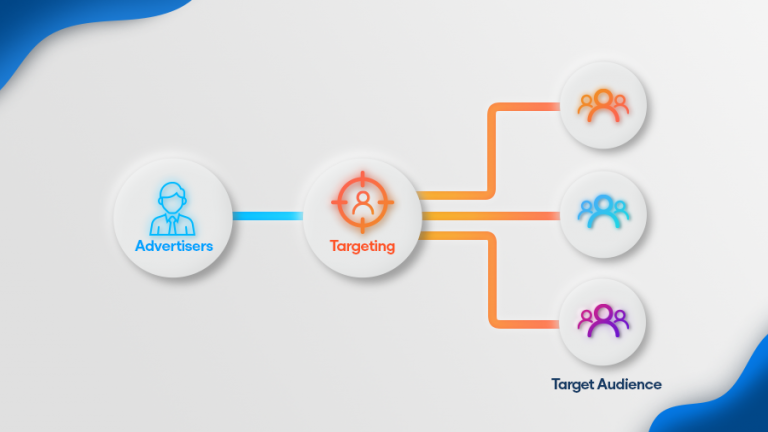
To meet their goals for digital marketing, every business has become more focused on targeting specific online audiences. Advertisers are spending tons of money on programmatic ad buying and accessibility to a wide range of audience data is what’s driving this strategy.
Previously with traditional display advertising, you could only hope that your ad gets noticed by people. Months of experimentation would either lead to failures or success, but this was hard to calculate. Nowadays, there are smarter, more accurate ways to measure programmatic advertising and ensure your display ads are attracting the right buyers.
Being able to identify your target audience easily and in real-time is vital for your business. Read on to know more about what is programmatic targeting & how it works because the following targeting tactics are worth advertisers’ future spend.
What Is Programmatic Targeting?
How do you find the right audience? Answer: Data acquisition and utilisation. Simply put, programmatic targeting uses acquired datasets to determine the right audience and the best places to find them online.
But the hard part is deciding where to start. This is where different data will inform the best path forward. The following offers a unique set of benefits that can help achieve specific end goals or add to the overall performance of your digital marketing strategy.
First-Party Data
First-party data is data gathered by your brand for various purposes. This information can range from customer records; contacts, leads, and prospects; social media followers; email newsletter subscribers; or even website visitors on desktop or mobile.
Second-Party Data
Second-party data is data gathered by another organization. With permission, this information can be passed to you via a contact in the industry or shared through a partnership. Maintaining a certain level of quality and exclusivity, this kind of data could be useful to broaden your audience.
Third-Party Data
Third-party data are data sets collected, segmented, and sold by data providers. These can be bought through public data exchanges, demand-side platforms (DSPs), or data management platforms (DMPs). If you want to rapidly scale an advertising campaign, third-party data may be the choice for you.
Related topic: Why Programmatic Advertising Matters More Now
The 4 Main Types of Programmatic Targeting
There are quite a few programmatic targeting options to choose from, but the main ones you need to know are audience targeting, contextual targeting, retargeting, and geo-fencing. Let’s break down each one:
1) Audience Targeting / Demographic Targeting
 Today, audience targeting is still one of the most used techniques for digital advertisers. It involves buying and serving ads to a certain audience segment. That segment is based on specific demographic data such as gender and age group, and/or interests such as cooking or fitness.
Today, audience targeting is still one of the most used techniques for digital advertisers. It involves buying and serving ads to a certain audience segment. That segment is based on specific demographic data such as gender and age group, and/or interests such as cooking or fitness.
All this information is usually derived from a combination of both first-party and third-party data, which can be selected when deciding how much to bid on available media inventory. Third-party data providers, such as elfoDSP, generate these audience lists by building segments using algorithms and data collection strategies.
2) Contextual Targeting / Keyword Targeting

Based on third-party data segments, contextual targeting looks at what content users are browsing online, targeting different types of content on specific pages. Content targeting segments can be as broad as sports or entertainment or on niche topics like healthcare news and award shows.
Contextual targeting allows advertisers to find different categories or keywords of the page to then display ads that are relevant to that specific content. The following options can be applied:
- Input certain keywords to display ads on sites containing those same keywords such as clothing or healthcare products.
- Pick from a selection of topics to go for a wider range, specific topics, or even utilize both at the same time for maximum coverage such as fashion and style.
- Choose what placement you want for your ad and select the websites, videos, or apps that you want your ad to be displayed on.
3) Retargeting
Retargeting is used by advertisers to re-engage users who have previously visited your site or have a past-purchase history. It’s a technique to draw customers back in with new or additional info to nudge them into making the final purchase.
Sometimes online shoppers may miss your display ads the first time or they may even find a better offer themselves on another site. In many cases, it may even take several visits before they decide to make a purchase.
This is why it is important to retarget prior site visitors with ads on items they already expressed interest in. Think of a product you’ve left in your online shopping cart recently. You may notice ads displaying that same product following you around the web. Well, that’s retargeting at work.
4) Geo-Targeting / Geo-Fencing

Geo-targeting, or “geo-fencing” as it’s more commonly known, focuses on targeting individuals within a specific geographic area (hence the name). Since it relies on GPS data, this type of programmatic targeting is more ideal for mobile campaigns than desktop.
Targeted ads are customized based on identity and behavioral profiles layered onto a specific place of interest — whether it’s your physical location, your competitor’s location, or a place where your target audience is. This can be narrowed down to the ZIP code level and sometimes even the IP address.
Unless disabled, all internet-enabled devices will display their locations by default whenever people browse on websites. Through geo-fencing, advertisers can find out when a new or returning customer changes their preferred store. This helps to provide deeper insight into individuals’ shopping choices.
Take Advantage of Different Programmatic Targeting Options
With the ability to run ad campaigns more strategically, it’s become easier to predict marketing outcomes by going programmatic. The use of programmatic targeting allows a business to identify its specific target markets more effectively.
You can adjust your ad budget accordingly by only choosing to display ads to people more likely to make purchases. Essentially, it’s a cost-effective way to convince motivated buyers online without wasting time on audiences who won’t purchase your product or service.
With that being said, determining which targeting tactic is right for you will come down to what your campaign goals are and what your budget is. Depending on your target audience, each of the methods described above offers the opportunity to deliver targeted ads at scale.
If you’re interested in programmatic advertising and want to get better returns from your marketing spend, you can talk to us today to find out how to optimize your digital marketing and advertising reach.





